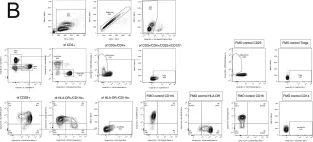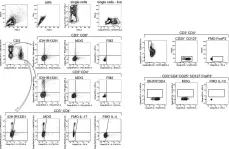Unlocking the potential of broadly reactive coronavirus monoclonal antibodies (mAbs) and their derivatives offers a transformative therapeutic avenue against severe COVID-19, especially crucial for safeguarding high-risk populations. Novel mAb-based immunotherapies may help address the reduced efficacy of current vaccines and neutralizing mAbs caused by the emergence of variants of concern (VOCs). Using phage display technology, we discovered a pan-SARS-CoV-2 mAb (C10) that targets a conserved region within the receptor-binding domain (RBD) of the virus. Noteworthy, C10 demonstrates exceptional efficacy in recognizing all assessed VOCs, including recent Omicron variants. While C10 lacks direct neutralization capacity, it efficiently binds to infected lung epithelial cells and induces their lysis via natural killer (NK) cell-mediated antibody-dependent cellular cytotoxicity (ADCC). Building upon this pan-SARS-CoV-2 mAb, we engineered C10-based, Chimeric Antigen Receptor (CAR)-T cells endowed with efficient killing capacity against SARS-CoV-2-infected lung epithelial cells. Notably, NK and CAR-T-cell mediated killing of lung infected cells effectively reduces viral titers. These findings highlight the potential of non-neutralizing mAbs in providing immune protection against emerging infectious diseases. Our work reveals a pan-SARS-CoV-2 mAb effective in targeting infected cells and demonstrates the proof-of-concept for the potential application of CAR-T cell therapy in combating SARS-CoV-2 infections. Furthermore, it holds promise for the development of innovative antibody-based and cell-based therapeutic strategies against severe COVID-19 by expanding the array of therapeutic options available for high-risk populations.Trial registration: ClinicalTrials.gov identifier: NCT04093596.
Product Citations: 32
In Emerging Microbes Infections on 1 December 2025 by Abba Moussa, D., Vázquez, M., et al.
-
COVID-19
A therapeutic regimen using neoantigen-specific TCR-T cells for HLA-A*2402-positive solid tumors.
In EMBO Molecular Medicine on 1 February 2025 by Bei, Y., Huang, Y., et al.
The adoptive transfer of TCR-T cells specific to neoantigens preferentially exhibits potent cytotoxicity to tumor cells and has shown promising efficacy in various preclinical human cancers. In this study, we first identified a functional TCR, Tcr-1, which selectively recognized the SYT-SSX fusion neoantigen shared by most synovial sarcomas. Engineered T-cell expressing Tcr-1 (Tcr-T1) demonstrated HLA-A*2402-restricted, antigen-specific anti-tumoral efficacy against synovial sarcoma cells, both in vitro and in vivo. Furthermore, to extend its application, we developed a cooperative therapeutic modality, in which exogenous SYT-SSX fusion neoantigen was loaded into stimuli-responsive nanoparticles (NPs) formed by mPEG-PVGLIG-PCL copolymers (Neo-AgNPs) for tumor targeting delivery. As expected, Neo-AgNPs were proven to have great tumor penetration and local release. In situ, the modification was able to direct engineered Tcr-T1 against other HLA-A*2402-positive malignant cancer cell lines with significant antigen-specific cytotoxicity despite their inherent mutation profiles. With these favorable data, our established cooperative therapeutic modality has great potential for further clinical investigation and provides new insight for future TCR-T cell therapy development.
© 2024. The Author(s).
-
Biochemistry and Molecular biology
-
Cancer Research
-
Immunology and Microbiology
Concomitant administration of seasonal influenza and COVID-19 mRNA vaccines.
In Emerging Microbes Infections on 1 December 2024 by Aydillo, T., Balsera-Manzanero, M., et al.
Current clinical guidelines support the concomitant administration of seasonal influenza vaccines and COVID-19 mRNA boosters vaccine. Whether dual vaccination may impact vaccine immunogenicity due to an interference between influenza or SARS-CoV-2 antigens is unknown. We aimed to understand the impact of mRNA COVID-19 vaccines administered concomitantly on the immune response to influenza vaccines. For this, 128 volunteers were vaccinated during the 22-23 influenza season. Three groups of vaccination were assembled: FLU vaccine only (46, 35%) versus volunteers that received the mRNA bivalent COVID-19 vaccines concomitantly to seasonal influenza vaccines, FluCOVID vaccine in the same arm (42, 33%) or different arm (40, 31%), respectively. Sera and whole blood were obtained the day of vaccination, +7, and +28 days after for antibody and T cells response quantification. As expected, side effects were increased in individuals who received the FluCOVID vaccine as compared to FLU vaccine only based on the known reactogenicity of mRNA vaccines. In general, antibody levels were high at 4 weeks post-vaccination and differences were found only for the H3N2 virus when administered in different arms compared to the other groups at day 28 post-vaccination. Additionally, our data showed that subjects that received the FluCOVID vaccine in different arm tended to have better antibody induction than those receiving FLU vaccines for H3N2 virus in the absence of pre-existing immunity. Furthermore, no notable differences in the influenza-specific cellular immune response were found for any of the vaccination groups. Our data supports the concomitant administration of seasonal influenza and mRNA COVID-19 vaccines.
-
COVID-19
-
Genetics
-
Immunology and Microbiology
The different paradigms of NK cell death in patients with severe trauma.
In Cell Death & Disease on 21 August 2024 by Chang, T. D., Chen, D., et al.
Lymphocyte decline, particularly the depletion of NK cells, is a prominent feature of immunosuppression following severe tissue injury, heightening the susceptibility of severe trauma patients to life-threatening infections. Previous research indicates that the reduction in the number of NK cells is closely associated with the process of cell death. Nonetheless, the precise mechanism of NK cell death remains unknown. Here, we discovered that following severe traumatic injury, NK cells undergo several cell death pathways, dominated by apoptosis and pyroptosis with coexistence of necrotic cell death, immunogenic cell death, ferroptosis, and autophagy. These NK cells with different paradigms of death have diverse cytokine expression profiles and diverse interactions with other immune cells. Further exploration revealed that hypoxia was strongly associated with this diverse paradigm of NK cell death. Detailed investigation of paradigms of cell death may help to enhance comprehension of lymphopenia post-severe trauma, to develop new strategy in preventing immunosuppression, and then to improve outcome for severe trauma population.
© 2024. The Author(s).
-
Homo sapiens (Human)
-
Cell Biology
In Frontiers in Immunology on 4 January 2024 by Martín Monreal, M. T., Kvist-Hansen, A., et al.
The DNA-binding peptide LL37 is a suspected autoantigen in psoriasis. It can be found in neutrophil extracellular traps (NETs) which have been suggested to play a role in the pathogenesis of the disease. Citrullination, the conversion of peptidyl-arginine into peptidyl-citrulline, can be implicated in the formation of NETs. We hypothesized that citrullination increases LL37 immunogenicity and that NETs are a source of LL37.
We aimed to characterize cytokine responses of B cells and T cells to native and citrullinated LL37 (citLL37) and determine the prevalence and composition of circulating NETs in patients with psoriasis and healthy blood donors (HDs).
Mononuclear cells (MNCs) and serum were isolated from 20 HDs and 20 patients with psoriasis. The MNCs were stimulated with native LL37 and citLL37 and the proportion of cytokine-positive B cells and T cells was determined by flow cytometry. Circulating antibodies against native LL37 and citLL37 as well as circulating NETs were measured by ELISA, as was the content of LL37, citLL37, and IgG in the NETs.
CitLL37, but not native LL37, induced IFN-γ-production by T cells and B cells from psoriasis patients, as well as IL-10-production by the patients' CD4+ T cells. Serum from 40% of patients and 55% of HDs contained circulating NETs, of which 63% and 27%, respectively, contained LL37. Only two patients had NETs containing citLL37 and IgG antibodies were found in NETs from three patients and one HD. Post-hoc analysis of the cytokines produced by B cells and T cells after stimulation with citLL37 revealed two clusters of patients consisting of 10 high-responders and 9 low-responders. The high-responders were those that had circulating NETs in combination with an earlier age of onset of the disease.
Citrullinated but not native LL37 elicits IFN-γ-responses by T cells and B cells from psoriasis patients, particularly those with circulating NETs and early disease onset, suggesting a role of citLL37 as an autoantigen in this subgroup of patients.
Copyright © 2023 Martín Monreal, Kvist-Hansen, Massarenti, Steffensen, Loft, Hansen, Ødum, Skov and Nielsen.
-
Homo sapiens (Human)
-
Immunology and Microbiology
In Nature on 1 April 2021 by Platten, M., Bunse, L., et al.
Fig.9.B

-
FC/FACS
-
Homo sapiens (Human)
Collected and cropped from Nature by CiteAb, provided under a CC-BY license
Image 1 of 2
In Nature on 1 April 2021 by Platten, M., Bunse, L., et al.
Fig.4.C

-
FC/FACS
-
Homo sapiens (Human)
Collected and cropped from Nature by CiteAb, provided under a CC-BY license
Image 1 of 2

